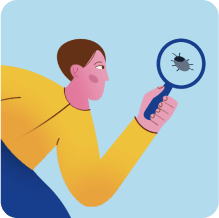Key takeaways
- Requirements gathering is a passive collection of pre-existing artifacts and stated needs, while requirements elicitation is an active discovery process that uncovers unstated needs.
- Elicitation methods include semi-structured interviews, contextual inquiry, facilitated workshops, prototyping, and user story mapping to reveal root problems.
- Gathering-heavy projects risk falling into the stated-need trap, leading to missed non-functional requirements, stakeholder passivity, and late-stage surprises requiring costly rework.
- The terminology you choose sets stakeholder expectations. Using “gathering’” signals passive collection, while “elicitation” invites collaborative problem-solving partnerships.
- Modern standards like IIBA BABOK and ISO/IEC/IEEE 29148 use elicitation terminology, reflecting the need for deeper discovery in requirements engineering.
The difference between gathering and elicitation directly affects whether you build what stakeholders say they want or what they actually need. Discover why this distinction matters 👇
Defining Requirements Gathering
What is requirements gathering? It’s collecting pre-existing artifacts, documented requests, and stated needs from available sources. A few quick examples are importing tickets from a backlog or compiling features mentioned in emails. It assumes the requirements already exist in some form, just waiting to be captured and cataloged.
Historically, this term dominated waterfall-era practices, where BAs would document everything upfront in massive specification documents. The connotation is passive: stakeholders tell you what they want, you write it down, and you move on. No pushback, no digging, no “but why do you need that?” It feels efficient until you realize that those asks don’t solve the actual problem.
Here are the common requirements gathering techniques:
- Documenting feedback from meetings
- Organizing stakeholder inputs
- Collecting specifications from various sources.
When gathering requirements, teams typically focus on documenting stated needs predominantly, rather than investigating deeper issues.
You likely know from your experience that real-world projects are messy. Stakeholders might articulate surface-level requests without explaining the underlying workflow pain or decision criteria driving that ask. Gathering alone can’t surface those nuances.
Here’s what makes a requirement gathering approach challenging:
- Stated-need bias: You capture what people say they want, not why they need it. This misses the root cause or real outcome they’re chasing.
- Spec inertia: Old processes get transferred into new systems. You’re digitizing dysfunction instead of improving workflows.
- Late surprises: Non-functional requirements (NFRs) like scalability, disaster recovery, or audit trails surface only after dev starts, triggering costly rework.
- Stakeholder passivity: If they think their job is just to “tell you requirements,” they disengage from validation and testing until it’s too late to course-correct.
- Blind spots: You miss tacit knowledge like workarounds, tribal know-how, and edge cases. People don’t realize these are important until something breaks.
Does gathering have a place? Yes. When you’re replacing a legacy system like-for-like and authoritative artifacts (statutes, SLAs, existing contracts) already define the scope. But even then, you’ll need elicitation to validate gaps and uncover silent workarounds keeping the old system functional. Think of gathering as a subset of elicitation, not a standalone method. It’s a useful input, but it’s never enough on its own.
Exploring Requirements Elicitation
Standards like IIBA BABOK and ISO/IEC/IEEE 29148 provide the exact elicitation terminology. They show that requirements elicitation and engineering takes the opposite approach compared to requirement gathering. In short, this approach is more like actively discovering instead of simply gathering.
So, what is requirements elicitation? It’s an approach to uncovering both stated and unstated needs. You’re engaging stakeholders through structured techniques like interviews, observation, workshops, and prototyping. This pulls out the needs they can’t easily articulate, the constraints they assume you already know, and the context that makes or breaks a feature in the field.
IIBA’s BABOK positions “Elicitation and Collaboration” as a core knowledge area with specific tasks: Prepare for Elicitation, Conduct Elicitation, Confirm Results. Notice the verbs: conduct, confirm, and prepare. They indicate that you should actually be orchestrating sessions that create shared understanding.
Why is this harder? Because stakeholders often don’t know what they need until they see it. The requirements elicitation process helps you to address that blocker.
Common software requirements elicitation methods include:
- Semi-structured stakeholder interviews and laddering questions
Uncover the “why” behind the “what.” Ask deeper questions to reveal motivations, decision criteria, and constraints. - Contextual inquiry
Observe users in their real environment to understand workflows and identify pain points or workarounds they might not mention in meetings. - Requirement workshops
Use event storming or brown-paper sessions to map processes together, align vocabularies, and reveal cross-department conflicts. - Prototyping
Present low-fidelity sketches or clickable mockups so stakeholders can respond to something tangible instead of abstract descriptions. - Observation-based elicitation
Watch users perform daily tasks to identify problems they might struggle to describe in interviews. - User story mapping
Visualize the full user journey and divide it into releases to keep the big picture visible and prioritize effectively. - Software-specific elicitation techniques
Include wireframing, user journey mapping, and technical spike investigations to uncover platform constraints and opportunities.
I love using process diagrams to start elicitation. Simply starting with the existing process and then talking about the future state, and then talk about the gaps. Pictures are a great tool, and if there isn't already a diagram, try to make one quick with the group and it'll give you a lot of insight!
Agile teams often integrate the listed techniques into iterative discovery cycles.
Requirements elicitation methods all share one thing: collaboration. You shouldn’t be extracting requirements from people. A much better approach is co-creating understanding with them instead. This way, it’s possible to keep pace with discovery practices, where stakeholder touchpoints run alongside delivery sprints. In such cases, elicitation prevents the last-minute review that derails a release three weeks before launch.
Moving from gathering to elicitation requires the right platform to support collaborative discovery. aqua cloud, an AI-driven test and requirement management solution, is exactly such a tool built to support modern elicitation practices. With aqua, you can document elicitation sessions in real time, maintain structured hierarchies that evolve with stakeholder input, and visualize dependencies through interactive graphs that reveal connections stakeholders might not articulate during interviews. The platform’s domain-trained AI Copilot transforms elicitation outputs into structured requirements automatically. It analyzes workshop notes, voice recordings, and even hand-drawn sketches to generate requirements that match your project’s terminology and context. aqua integrates with your existing workflow through two-way sync with Jira and Azure DevOps. It also has native connections to Confluence, Jenkins, Selenium, and other development tools via REST API. This means requirements discovered during elicitation sessions flow directly into your backlog without manual transfer.
Transform stakeholder conversations into traceable requirements with 97% less manual effort
Key Differences Between Gathering and Elicitation

Requirements elicitation vs requirement gathering differ in three dimensions: engagement posture, depth of discovery, and stakeholder expectations. Gathering is reactive. You’re pulling from existing sources or fielding incoming requests. Elicitation is proactive. You’re structuring conversations, running experiments, and challenging assumptions to uncover what’s really needed. Gathering often treats requirements and their benefits))as fixed. Elicitation treats them as hypotheses to be validated.
The terminology sets the tone for how much collaboration you’ll get and how accountable people feel for the outcomes. The Agile requirements gathering vs elicitation distinction becomes important in complex projects where stakeholders may not fully understand their needs.
Here’s a side-by-side comparison of these two approaches:
| Aspect | Gathering | Elicitation |
|---|---|---|
| Posture | Passive collection | Active discovery and co-creation |
| Source | Existing docs, tickets, stated requests | Stakeholder engagement, observation, experiments |
| Depth | Surface-level; assumes clarity | Investigates context, constraints, tacit knowledge |
| Validation | Minimal; assumes inputs are correct | Continuous; prototypes and tests validate assumptions |
| Stakeholder role | Provider of answers | Collaborator in problem-solving |
| Risk | Stated-need trap; missing NFRs and context | Higher effort upfront, but reduces late rework |
| Standards alignment | Dated terminology (waterfall legacy) | Preferred in BABOK, ISO 29148, INCOSE guidance |
Using the right term matters because it shapes how you scope sessions, which techniques you reach for, and whether stakeholders show up prepared to think critically or just dump feature requests on you. If your BA playbook still says “requirements gathering,” you’re signaling a passive, checklist-driven process, even if you’re actually running collaborative workshops. Switch the language to “elicitation and collaboration,” and you’re inviting people into a discovery partnership.
That difference shows up in outcomes, too. Elicitation-led projects surface non-functional requirements early, so they’re baked into design instead of tacked on later. They reduce “we built the wrong thing” risk by grounding features in real workflows and measurable outcomes. They generate stakeholder buy-in because people helped shape the solution rather than just receiving it. Gathering-heavy projects often deliver exactly what was asked for and still fail because the ask was incomplete, outdated, or didn’t address the root problem.
We should try to make them explicit because all team members need to know the facts and figures, and there should be no misunderstandings and assumptions while designing and coding. If there are things that are ‘implicit’, make them explicit by clearly stating them in the requirements document.
Real-World Applications: When to Gather vs. Elicit
When does each approach make sense? The answer depends on problem uncertainty, domain maturity, and constraint complexity. If you’re working in a well-understood domain with authoritative artifacts, gathering can anchor your work. But you’ll still lean on elicitation to fill gaps. If you’re tackling a new product, a complex socio-technical change, or a high-risk domain like safety-critical systems, elicitation is non-negotiable. Here are a couple of abstract scenarios to better understand when to gather and when to elicit requirements:
Scenario 1: Regulatory replacement or parity migration (gathering-led)
You’re replacing a legacy policy administration system for an insurance company. The new system must replicate existing functionality while meeting updated regulatory standards. Here, artifacts, e.g., statutes, SLAs, underwriting manuals, and compliance checklists, already define most of what you need. You can gather by cataloging those sources, mapping them to capabilities, and building a traceability matrix. But even in this scenario, you’ll run targeted elicitation sessions to validate edge cases and uncover undocumented workarounds. You’ll also confirm how non-functional constraints like disaster recovery and audit logging should work in the new architecture. Gathering gives you the baseline. Elicitation catches what the docs missed.
Scenario 2: New product or business model (elicitation-led)
You’re building a SaaS platform for QA teams to coordinate test automation across distributed CI/CD pipelines. Something that doesn’t exist in quite this form yet. Stakeholders can’t hand you a requirements doc because they’re still figuring out what the problem really is. Here, you start with discovery interviews to understand the outcomes teams are chasing. Such possible results may include faster feedback loops, better flakiness visibility, and even simpler cross-team reporting. You run contextual inquiries, watching QA engineers triage test failures. You prototype lightweight dashboards to test which metrics actually help and iterate based on usability sessions. Gathering happens later. Once you’ve converged on a direction, you’ll gather NFRs from security policies, compliance standards, and infrastructure constraints. Elicitation drives the discovery. Gathering completes it.
The choice between gathering and elicitation is rarely binary. The real question is when to emphasize each. Treat gathering as a complement that fills in authoritative details. Treat elicitation as the engine that discovers what really matters. That way, you’re building to solve instead of building simply according to specs.
Effective requirements elicitation generates significant outputs from workshops, interviews, and observation sessions. Managing all that discovered knowledge requires a platform that keeps pace. aqua cloud, a dedicated test and requirement management solution, centralizes your entire elicitation process through validation and traceability. With aqua’s requirements engineering tool, you can organize elicited requirements in flexible hierarchies, track version history with complete audit trails, and collaborate through inline discussions and approval workflows. The platform’s AI Copilot for creating requirements)) accelerates documentation by converting elicitation artifacts, such as meeting transcripts ot whiteboard photos, into testable requirements. Real-time dashboards visualize coverage and relationships between requirements and test cases. aqua connects with tools your team already uses through integrations with Jira, Azure DevOps, Confluence, TestRail, and CI/CD platforms like Jenkins and GitLab. Whether you’re running contextual inquiries or interviews, aqua ensures nothing discovered during elicitation gets lost.
Save up to 12.8 hours per week while maintaining 100% traceability across your entire workflow
Conclusion
Here’s the takeaway: use “requirements gathering” only when you’re listing existing documents. Requirements elicitation reflects a more proactive approach. It changes how you work with stakeholders, which methods you choose, and how deeply you understand the real problem behind their requests. Elicitation turns gathering into discovery, where you identify hidden needs and clarify context. Gathering still has value when dealing with legacy systems or COTS specs, but elicitation closes gaps and avoids repeating broken processes. Start projects with this mindset to create solutions that truly work.

















